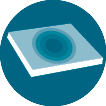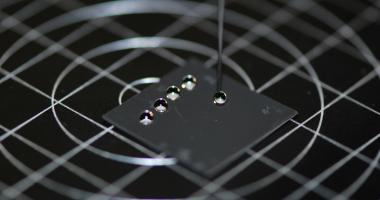Machining of transparent materials
Cutting, welding, drilling and engraving of transparent materials with minimization of mechanical stress. Short or ultra-short pulse lasers allow transparent materials to be machined with or without removal of material and to modify their intra-volume physical properties.
The characteristics of the machining of transparent materials process:

Benefits
- Intra-volume machining: localized laser modification – long lasting effect - no need for additional organic layer
- Ablation-free cutting: dust-free - very fast - no taper
- Conventional cutting: fast - with controlled geometry

Performance
- Intra-volume machining: up to 15 MPa of mechanical strength for some glasses, micrometric precision
- Conventional and ablation-free cutting: precision of a few μm
- Conventional cutting: aspect ratio up to 50

Throughput
- Ablation-free cutting: > 100 mm.s-1, can cut up to a thickness of 1 mm in a single pass
- Intra-volume machining: <100 mm.s-1 for welding and a few hundred mm.s-1 for index modification
- Conventional cutting: up to a few tens of mm.s-1 of machining speed depending on the thickness

Laser workstation
- Intra-volume machining: large numerical aperture objective, scanning systems
- Ablation-free cutting: special beam shaping such as Bessel beam
- Conventional cutting: bottom-up approach through material volume

Surface condition
- Ablation-free cutting: surface roughness less than 500 nm
- Conventional cutting: surface roughness less than 1 μm
Materials used for the machining of transparents materials:
- Glass
- Crystals
- Transparents ceramics
Process sheet

Areas of application
- Watchmaking
- Optics
- Display
- Electronics
Publications
Associated products or services
-

Selective ablation
The use of a specific pulse duration and/or suitable wavelength(s) makes it possible to work in a condition where the surface layer ablation threshold is lower than the substrate’s. -

Etching - Controlled ablation
Laser engraving is carried out by removing material layer by layer to obtain a 2D or 3D effect on all material types. -

Laser drilling
Laser drilling makes it possible to create through or blind holes with variable shape and high aspect ratio, on all types of materials and thicknesses. -

Laser cutting
Laser cutting enables precision part production of all material types, even of transparent and hard materials such as SIC and diamond. -

Surface texturing
Laser texturing and surface functionalization make it possible to create effects or generate new properties on all surface types.